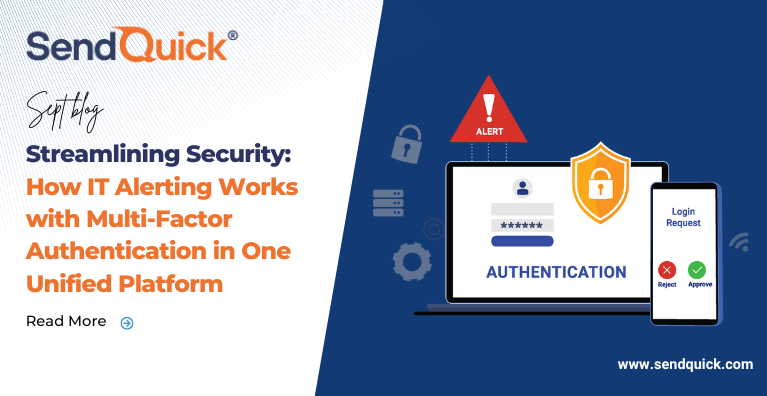Cyber security threats are evolving at an unprecedented pace. Cyberattacks have become more sophisticated, making it essential for organizations to employ robust security measures to protect their sensitive data and systems. One of the cornerstones of modern security is multi-factor authentication (MFA), which adds an extra layer of protection beyond traditional username and password combinations. But what if you could take MFA to the next level by integrating it seamlessly with IT alerting capabilities in a single, unified platform? In this article, we will explore how this dynamic combination can enhance your organization’s security posture.
The Security Landscape Today
Before we delve into the fascinating synergy between alerting and MFA, let us take a quick look at the ever-evolving security landscape. Cybercriminals are becoming more sophisticated, and their methods are growing increasingly insidious. Password breaches, phishing attacks, and unauthorized access attempts are rampant. In this environment, the stakes are higher than ever.
Enter Multi-Factor Authentication (MFA)
Multi-Factor Authentication, often referred to as two-factor authentication (2FA) or two-step verification, is a security process that requires users to provide two or more forms of identification to access a system or application. Typically, this involves something the user knows (like a password) and something the user has (like a smartphone for receiving a one-time code).
MFA is an invaluable tool in the fight against unauthorized access. It adds an additional layer of security by making it significantly more challenging for cybercriminals to gain entry, even if they have the user’s password.
The Missing Piece: Alerting
While MFA is a potent weapon in your security arsenal, it cannot operate in isolation. This is where IT alerting steps in. In a single, unified platform that combines MFA and IT alerting, a seamless integration takes place.
1. Real-Time Notifications: Alerting provides real-time notifications whenever a suspicious authentication attempt occurs. Alerting systems can be configured to detect unusual login patterns. If someone attempts to access your systems from an unfamiliar location or device, you can receive an alert, which can trigger further investigation or even an automatic lockdown of the account. This immediate feedback allows security teams to spot and react to such activities promptly.
2. Incident Response: In the unfortunate event of a security incident, IT alerting can play a crucial role in orchestrating incident response procedures. Notifications can be sent to the appropriate teams, ensuring that threats are addressed swiftly and effectively.
3. Centralized Management: Managing security features in a single, unified platform simplifies administration and reduces the complexity of security infrastructure.
4. Scalability: As your organization grows, a unified platform can easily scale to accommodate increased security needs without introducing additional complexity.
5. Compliance: Many regulatory requirements mandate strong authentication and real-time monitoring and alerting. A single, unified platform with alerting helps organizations meet these compliance obligations.
Conclusion
The union of IT alerting and Multi-Factor Authentication within a single, unified platform offers a formidable defense against cyber threats. It is a combination that not only safeguards your organization but also ensures that your security measures are adaptive, intelligent, and ready to tackle the challenges of the modern cybersecurity landscape.
Investing in such a solution is not just a choice but a necessity for any organization that takes its security seriously. It is about streamlining security for today and fortifying it for the future.
Find out more about this single, unified platform that SendQuick Conexa offers! Contact a SendQuick expert via: https://www.sendquick.com/contact-us/






